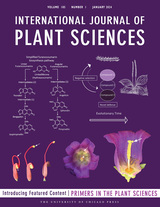8 books about Brown, Andy
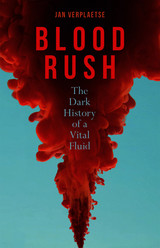
Blood Rush
The Dark History of a Vital Fluid
Jan Verplaetse
Reaktion Books, 2020
As a young man, Jan Verplaetse saw a hare suspended from a meat hook, skinned and gutted. What struck him so forcefully at the time was not the animal itself, but the blood gently dripping from its mouth. His reaction prompted the start of a quest he undertakes in this book: to investigate our fascination with blood, the most vital of fluids.
Blood Rush shows how, throughout history, blood has had the capacity to intoxicate us, to the point that we lose ourselves, whether in violence, through hunting, fighting, or killing, or in the vicarious thrill of watching sporting events, horror films, or video games. Are these feelings physical, or in our imagination? Where does the magic of blood come from? In his deeply researched and provocative narrative, Verplaetse moves from antiquity to the present, from magic to experimental psychology, from philosophy to religion and scientific discoveries, to demonstrate why blood at once attracts and repels us.
Blood Rush shows how, throughout history, blood has had the capacity to intoxicate us, to the point that we lose ourselves, whether in violence, through hunting, fighting, or killing, or in the vicarious thrill of watching sporting events, horror films, or video games. Are these feelings physical, or in our imagination? Where does the magic of blood come from? In his deeply researched and provocative narrative, Verplaetse moves from antiquity to the present, from magic to experimental psychology, from philosophy to religion and scientific discoveries, to demonstrate why blood at once attracts and repels us.
[more]

Colonialism, Capitalism and Racism
A Postcolonial Chronicle of Dutch and Belgian Practice
Jan Breman
Amsterdam University Press, 2024
For a long time, Europe’s colonizing powers justified their urge for expansion with the conviction that they were ‘bringing civilization to territories where civilization was lacking.’ This doctrine of white superiority and indigenous inferiority was accompanied by a boundless exploitation of local labor. Under colonial rule, the ideology that later became known as neoliberalism was free to subject labor to a capitalism tainted by racialized policies. This political economy has now become dominant in the Western world, too, and has reversed the trend towards equality. In Colonialism, Capitalism and Racism, Jan Breman shows how racial favoritism is no longer contained to ‘faraway, indigenous peoples,’ but has become a source of polarization within Western societies as well.
[more]
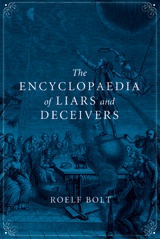
The Encyclopaedia of Liars and Deceivers
Roelf Bolt
Reaktion Books, 2014
George Washington may never have told a lie, but he may be the only person—our history is littered with liars, deceivers, fraudsters, counterfeiters, and unfaithful lovers. The Encyclopaedia of Liars and Deceivers gathers 150 of them, each entry telling the intriguing tale of the liar’s motives and the people who fell for the lies.
To collect these stories of deceit, Roelf Bolt travels from ancient times to the present day, documenting a huge assortment of legerdemain: infamous quacks, fraudulent scientists, crooks who committed “pseudocides” by faking their own deaths, and forgers of artworks, design objects, archaeological finds, and documents. From false royal claims, fake dragon’s eggs, and bogus perpetual motion machines to rare books, mermaid skeletons, and Stradivari violins, Bolt reveals that almost everything has been forged or faked by someone at some point in history. His short, accessible narratives in each entry offer biographies and general observations on specific categories of deceit, and Bolt captures an impressive number of famous figures—including Albert Einstein, Cicero, Ptolemy, Ernest Hemingway, François Mitterand, and Marco Polo—as well as people who would have remained anonymous had their duplicity not come to light.
Funny, shocking, and even awe-inspiring, the stories of deception in this catalog of shame make The Encyclopaedia of Liars and Deceivers the perfect gift for all those who enjoy a good tall tale—and those people who like to tell them.
To collect these stories of deceit, Roelf Bolt travels from ancient times to the present day, documenting a huge assortment of legerdemain: infamous quacks, fraudulent scientists, crooks who committed “pseudocides” by faking their own deaths, and forgers of artworks, design objects, archaeological finds, and documents. From false royal claims, fake dragon’s eggs, and bogus perpetual motion machines to rare books, mermaid skeletons, and Stradivari violins, Bolt reveals that almost everything has been forged or faked by someone at some point in history. His short, accessible narratives in each entry offer biographies and general observations on specific categories of deceit, and Bolt captures an impressive number of famous figures—including Albert Einstein, Cicero, Ptolemy, Ernest Hemingway, François Mitterand, and Marco Polo—as well as people who would have remained anonymous had their duplicity not come to light.
Funny, shocking, and even awe-inspiring, the stories of deception in this catalog of shame make The Encyclopaedia of Liars and Deceivers the perfect gift for all those who enjoy a good tall tale—and those people who like to tell them.
[more]

The House of Orange in Revolution and War
A European History, 1772–1890
Jeroen Koch, Dik van der Meulen, and Jeroen van Zanten
Reaktion Books, 2022
An epic account of the House of Orange-Nassau over one hundred and fifty years of European history.
Three rulers from the House of Orange-Nassau reigned over the Netherlands from 1813 to 1890: King William I from 1813 to 1840, King William II from 1840 to 1849, and King William III from 1849 to 1890. Theirs is an epic tale of joy and tragedy, progress and catastrophe, disappointment and glory—all set against the backdrop of a Europe plagued by war and revolution.
The House of Orange in Revolution and War relates one and a half centuries of House of Orange history in a gripping narrative, leading the reader from the last stadholders of the Dutch Republic to the modern monarchy of the early twentieth century, from the French Revolution and the Napoleonic wars to World War I and the European Revolutions that came after it.
Three rulers from the House of Orange-Nassau reigned over the Netherlands from 1813 to 1890: King William I from 1813 to 1840, King William II from 1840 to 1849, and King William III from 1849 to 1890. Theirs is an epic tale of joy and tragedy, progress and catastrophe, disappointment and glory—all set against the backdrop of a Europe plagued by war and revolution.
The House of Orange in Revolution and War relates one and a half centuries of House of Orange history in a gripping narrative, leading the reader from the last stadholders of the Dutch Republic to the modern monarchy of the early twentieth century, from the French Revolution and the Napoleonic wars to World War I and the European Revolutions that came after it.
[more]
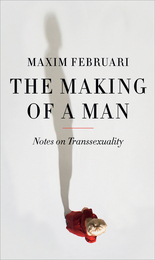
The Making of a Man
Notes on Transsexuality
Maxim Februari
Reaktion Books, 2015
In the autumn of 2012, Maxim Februari—known until then as writer and philosopher Marjolijn Februari—announced his intention to live as a man. The news was greeted with a diversity of reactions, from curiosity to unease. These responses made it absolutely clear to Februari that most of us don’t know how to think about transsexuality. The Making of a Man explores this lacuna through a deeply personal meditation on a profoundly universal aspect of our identities.
Februari contemplates the many questions that sexual transitions entail: the clinical effects of testosterone, the alteration of sexual organs, and its effects on sexual intimacy; how transsexuality figures in the law; and how it challenges the way we talk about sex and gender, such as the seemingly minor—but crucially important—difference between the terms “transsexual” and “transgender.” He analyzes our impressions of effeminate men and butch women, separating apparent acceptance from actual prejudice, and critically examines the curious requirement in many countries that one must demonstrate a psychological disturbance—a “gender identity disorder”—in order to be granted sex change therapies. From there he explores the seemingly endless minutiae changing genders or sex effect, from the little box with an M or an F on passports to the shockingly sudden way testosterone can adjust physical features.
With his characteristically clear voice combined with intimate—sometimes moving, sometimes funny—ruminations, Februari wakes readers up to all the ways, big and small, our world is structured by sex and gender.
Februari contemplates the many questions that sexual transitions entail: the clinical effects of testosterone, the alteration of sexual organs, and its effects on sexual intimacy; how transsexuality figures in the law; and how it challenges the way we talk about sex and gender, such as the seemingly minor—but crucially important—difference between the terms “transsexual” and “transgender.” He analyzes our impressions of effeminate men and butch women, separating apparent acceptance from actual prejudice, and critically examines the curious requirement in many countries that one must demonstrate a psychological disturbance—a “gender identity disorder”—in order to be granted sex change therapies. From there he explores the seemingly endless minutiae changing genders or sex effect, from the little box with an M or an F on passports to the shockingly sudden way testosterone can adjust physical features.
With his characteristically clear voice combined with intimate—sometimes moving, sometimes funny—ruminations, Februari wakes readers up to all the ways, big and small, our world is structured by sex and gender.
[more]
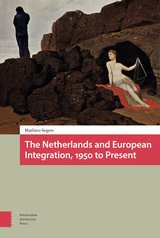
The Netherlands and European Integration, 1950 to Present
Mathieu Segers
Amsterdam University Press, 2020
On 9 May 1950, France launched a revolutionary plan for supranational cooperation in Western Europe. The Netherlands was taken completely by surprise. In the decades that followed, European integration moved forward at an unprecedented pace, taking the Netherlands with it. Geography and the post-war world seemed to leave the country no other choice. European integration forced - and is still forcing - the Netherlands on a far-reaching 'journey to the continent'.For the Netherlands, European integration represents a difficult journey to a new old world that often seems far off. How has that journey progressed so far? Why did the Netherlands join the common European market and currency from the very beginning? Was this course inevitable? And where has it brought the country?Using new, international source material, The Netherlands and European Integration digs deeply into the history of the Netherlands in Europe - a subject that is today more topical than ever.
[more]

Planet Hunters
The Search for Extraterrestrial Life
Lucas Ellerbroek
Reaktion Books, 2017
Astronomers are on the verge of answering one of our most profound questions: are we alone in the universe? The ability to detect life in remote solar systems is at last within sight, and its discovery—even if only in microbial form—would revolutionize our self-image. Planet Hunters is the rollicking tale of the search for extraterrestrial life and the history of an academic discipline.
Astronomer Lucas Ellerbroek takes readers on a fantastic voyage through space, time, history, and even to the future as he describes the field of exoplanet research, from the early ideas of sixteenth-century heretic Giordano Bruno to the discovery of the first exoplanet in 1995 to the invention of the Kepler Space Telescope. We join him on his travels as he meets with leading scientists in the field, including Michel Mayor, who discovered the first exoplanet, and Bill Borucki, principal investigator for NASA’s Kepler mission. Taken together, the experiences, passion, and perseverance of the scientists featured here make the book an exciting and compelling read.
Presenting cutting-edge research in a dynamic and accessible way, Planet Hunters is a refreshing look into a field where new discoveries come every week and paradigms shift every year.
Astronomer Lucas Ellerbroek takes readers on a fantastic voyage through space, time, history, and even to the future as he describes the field of exoplanet research, from the early ideas of sixteenth-century heretic Giordano Bruno to the discovery of the first exoplanet in 1995 to the invention of the Kepler Space Telescope. We join him on his travels as he meets with leading scientists in the field, including Michel Mayor, who discovered the first exoplanet, and Bill Borucki, principal investigator for NASA’s Kepler mission. Taken together, the experiences, passion, and perseverance of the scientists featured here make the book an exciting and compelling read.
Presenting cutting-edge research in a dynamic and accessible way, Planet Hunters is a refreshing look into a field where new discoveries come every week and paradigms shift every year.
[more]
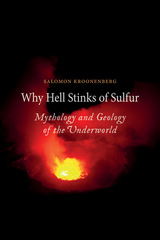
Why Hell Stinks of Sulfur
Mythology and Geology of the Underworld
Salomon Kroonenberg
Reaktion Books, 2013
When people go looking for hell, they go underground. Dante, Aeneas, and Odysseus all journeyed beneath the earth to find the underworld, a place where the dead are tortured according to their sins. Buffy the Vampire Slayer had to deal with a huge underground pit infested with demons below her high school called the Hellmouth. And when Homer Simpson ate the forbidden donut for which he’d sold his soul to the devil, he was sucked through a fiery hole in the ground. Though humans actually haven’t gone more than 7.5 miles into the earth, we associate this mysterious underground realm with darkness and death, and the depths of the earth’s interior remain an inspiration for writers and artists trying to imagine hell.
Why Hell Stinks of Sulfur uses subterranean mythology as a point of departure to explore the vast world that lies beneath our feet. Geologist Salomon Kroonenberg takes us on an expedition that begins in Dante’s Inferno and continues through Virgil, Da Vinci, Descartes, and Jules Verne. He investigates the nine circles of hell, searches a lake near Naples for the gates of hell used by Aeneas, and turns a scientific spotlight on the many myths of the underworld. He uncovers the layers of the earth’s interior one by one, describing the variety of gasses, ores, liquids, and metals that add to the immense variety of color that can be found below us. Kroonenberg views the inside of the earth as a living ecosystem whose riches we are only beginning to discover, and he warns against our thirst for natural resources exhausting the earth.
From the underground rivers and lakes that have never seen the light of day to the story of Saint Barbara—the patron saint of mineworkers—Kroonenberg’s pursuit of the geological foundations of hell is a fascinating journey to the center of the earth.
[more]
READERS
Browse our collection.
PUBLISHERS
See BiblioVault's publisher services.
STUDENT SERVICES
Files for college accessibility offices.
UChicago Accessibility Resources
home | accessibility | search | about | contact us
BiblioVault ® 2001 - 2024
The University of Chicago Press






